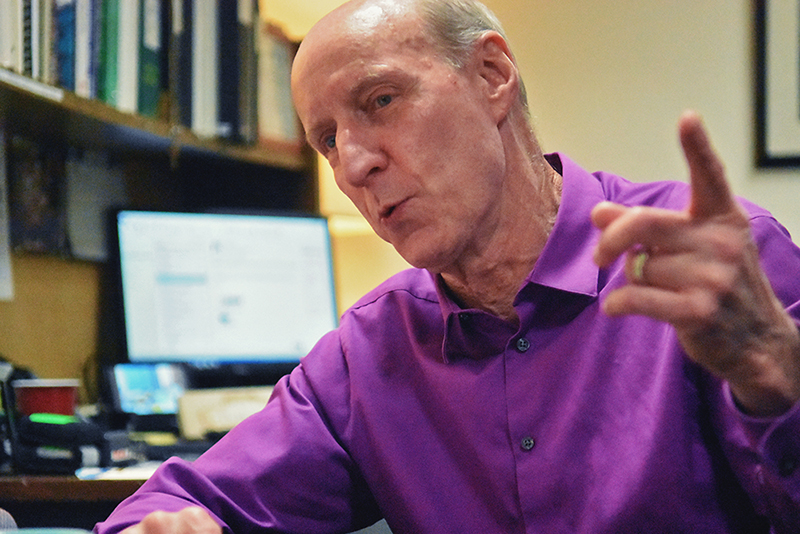Paul Byers, WQED Executive Director of Engineering
Paul Byers started at WQED on July 7, 1970.
“When I started here Fred had only been doing the show for two years. It started in ’68. And it’s funny that the way I got my first job here. My cousin was married to this guy named Joe Colaizzi who happened to be a director for Mister Rogers’ Neighborhood,” said Byers. “I believe he was the first director of Mister Rogers’ Neighborhood. And I was still going to school at PITT, and I was looking for a summer job.”
Byers remembers that the show was done from almost September to May in the studio. They were constantly doing the show. At one point, he did have a small background part on Mister Rogers’ Neighborhood.
“Someone asked me if I wanted to do a little walk-on part, and I said, ‘Sure.’ They had… Joe Negri’s Music Shop, [it] was one of the scenes. My role was to walk in, and I think I asked for a Seals and Croft record or something like that. And so yeah, it just happened, and he gave me the record, and I paid for it and walked out. I think we had to do two or three takes. It was just in the background, Fred was in the foreground. So, that was my first introduction to the Neighborhood.”
Byers went on to do a lot of work on the Neighborhood. He did edit some of the shows, he was a camera operator, and he even traveled with Mister Rogers!
“I’ll never forget this one time, we went to Washington, D.C. to visit the Post Master General and to see how stamps were made for the segment of the show called ‘Picture Picture,’ where he always showed people and showed the kids how things were done [or] made… This was probably like 1987, something like that. And [we] get on the plane, and of course, we’re flying coach because Fred would never fly First Class. Everybody would just come up to him – it was crazy. Even the pilot before we took off had to come back, get a picture with him, flight attendants – it was unbelievable.”
Byers said that Mister Rogers’ Neighborhood was such an “old school” way of making television, even for back in the 1970s. He said that no one played live music on the set of a show, but Mister Rogers did.
“Fred has his music director, John Costa, who’s one of the best jazz pianists of all time, in fact the piano that’s up there now is still Johnny’s piano. The Steinway that’s up in the studio… Johnny would be the pianist and there’d be a drummer and a base player,” said Byers. “And they would play a song as the tape was being recorded on camera, but you’d never see them of course, they’d be in the background – in the back of the studio playing. If something happened to the tape, they had to redo it. They would just have to play the same song again – I mean nobody does that… Fred like the immediacy and just the presence of having Johnny and the band in the studio.” And that’s how it was done from the first day to the last day.
Byers remembers lots of funny moments and practical jokes on set. He said it was a lot of fun, and he remembers one specific joke that had everyone laughing.
“You know how Fred would come in and walk in the front door and take off his sport coat, put on his sweater, and then he would take off his loafers and put on his blue sneakers. And then at the end of the day, he would reverse it. So this one time, we had this crew guy… his name is Jimmy Seech, and he and Frank Warninski, they still work here, probably worked on every one of Fred’s shows that he ever made,” said Byers. “Jimmy was kind of a short guy with small feet, but he wore the same kind of brown loafers that Fred wore. So, one day between takes, Jimmy put his loafers down there instead of Fred’s, and he didn’t know it,” Byers said. “And they’re taping and Fred takes his blue sneakers off and goes to put one of these brown loafers on, and he can’t get it on. And then all of a sudden he realizes what happened, and he looks up and he looked right a Jimmy and went, ‘Oh, Jimmy!” with this big laugh. It was just so funny.”
When asked if he could possibly describe Mister Rogers in three words or less, Byers simply said, “full of grace.”
